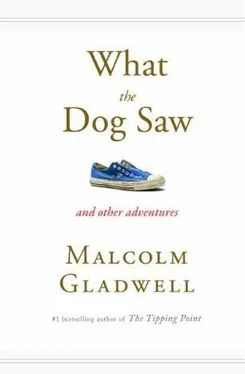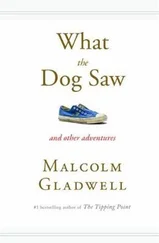Pit bulls, descendants of the bulldogs used in the nineteenth century for bull baiting and dogfighting, have been bred for “gameness,” and thus a lowered inhibition to aggression. Most dogs fight as a last resort, when staring and growling fail. A pit bull is willing to fight with little or no provocation. Pit bulls seem to have a high tolerance for pain, making it possible for them to fight to the point of exhaustion. Whereas guard dogs like German shepherds usually attempt to restrain those they perceive to be threats by biting and holding, pit bulls try to inflict the maximum amount of damage on an opponent. They bite, hold, shake, and tear. They don’t growl or assume an aggressive facial expression as warning. They just attack. “They are often insensitive to behaviors that usually stop aggression,” one scientific review of the breed states. “For example, dogs not bred for fighting usually display defeat in combat by rolling over and exposing a light underside. On several occasions, pit bulls have been reported to disembowel dogs offering this signal of submission.” In epidemiological studies of dog bites, the pit bull is overrepresented among dogs known to have seriously injured or killed human beings, and as a result, pit bulls have been banned or restricted in several Western European countries, China, and numerous cities and municipalities across North America. Pit bulls are dangerous.
Of course, not all pit bulls are dangerous. Most don’t bite anyone. Meanwhile, Dobermans and Great Danes and German shepherds and Rottweilers are frequent biters as well, and the dog that recently mauled a Frenchwoman so badly that she was given the world’s first face transplant was, of all things, a Labrador retriever. When we say that pit bulls are dangerous, we are making a generalization, just as insurance companies use generalizations when they charge young men more for car insurance than the rest of us (even though many young men are perfectly good drivers), and doctors use generalizations when they tell overweight middle-aged men to get their cholesterol checked (even though many overweight middle-aged men won’t experience heart trouble). Because we don’t know which dog will bite someone or who will have a heart attack or which drivers will get in an accident, we can make predictions only by generalizing. As the legal scholar Frederick Schauer has observed, “painting with a broad brush” is “an often inevitable and frequently desirable dimension of our decision-making lives.”
Another word for generalization, though, is stereotype, and stereotypes are usually not considered desirable dimensions of our decision-making lives. The process of moving from the specific to the general is both necessary and perilous. A doctor could, with some statistical support, generalize about men of a certain age and weight. But what if generalizing from other traits—such as high blood pressure, family history, and smoking—saved more lives? Behind each generalization is a choice of what factors to leave in and what factors to leave out, and those choices can prove surprisingly complicated. After the attack on Jayden Clairoux, the Ontario government chose to make a generalization about pit bulls. But it could also have chosen to generalize about powerful dogs, or about the kinds of people who own powerful dogs, or about small children, or about backyard fences—or, indeed, about any number of other things to do with dogs and people and places. How do we know when we’ve made the right generalization?
In July of 2005, following a series of bombings in subways and on buses in London, the New York City Police Department announced that it would send officers into the subways to conduct random searches of passengers’ bags. On the face of it, doing random searches in the hunt for terrorists—as opposed to being guided by generalizations—seems like a silly idea. As a columnist in New York magazine wrote at the time, “Not just ‘most’ but nearly every jihadi who has attacked a Western European or American target is a young Arab or Pakistani man. In other words, you can predict with a fair degree of certainty what an Al Qaeda terrorist looks like. Just as we have always known what Mafiosi look like—even as we understand that only an infinitesimal fraction of Italian-Americans are members of the mob.”
But wait: do we really know what mafiosi look like? In The Godfather, where most of us get our knowledge of the Mafia, the male members of the Corleone family were played by Marlon Brando, who was of Irish and French ancestry, James Caan, who is Jewish, and two Italian-Americans, Al Pacino and John Cazale. To go by The Godfather, mafiosi look like white men of European descent, which, as generalizations go, isn’t terribly helpful. Figuring out what an Islamic terrorist looks like isn’t any easier. Muslims are not like the Amish: they don’t come dressed in identifiable costumes. And they don’t look like basketball players; they don’t come in predictable shapes and sizes. Islam is a religion that spans the globe.
“We have a policy against racial profiling,” Raymond Kelly, New York City’s police commissioner, told me. “I put it in here in March of the first year I was here. It’s the wrong thing to do, and it’s also ineffective. If you look at the London bombings, you have three British citizens of Pakistani descent. You have Germaine Lindsay, who is Jamaican. You have the next crew, on July 21, who are East African. You have a Chechen woman in Moscow in early 2004 who blows herself up in the subway station. So whom do you profile? Look at New York City. Forty percent of New Yorkers are born outside the country. Look at the diversity here. Who am I supposed to profile?”
Kelly was pointing out what might be called profiling’s “category problem.” Generalizations involve matching a category of people to a behavior or trait—overweight middle-aged men to heart-attack risk, young men to bad driving. But, for that process to work, you have to be able both to define and to identify the category you are generalizing about. “You think that terrorists aren’t aware of how easy it is to be characterized by ethnicity?” Kelly went on. “Look at the 9/11 hijackers. They came here. They shaved. They went to topless bars. They wanted to blend in. They wanted to look like they were part of the American dream. These are not dumb people. Could a terrorist dress up as a Hasidic Jew and walk into the subway, and not be profiled? Yes. I think profiling is just nuts.”
Pit bull bans involve a category problem, too, because pit bulls, as it happens, aren’t a single breed. The name refers to dogs belonging to a number of related breeds, such as the American Staffordshire terrier, the Staffordshire bull terrier, and the American pit bull terrier—all of which share a square and muscular body, a short snout, and a sleek, short-haired coat. Thus the Ontario ban prohibits not only these three breeds but any “dog that has an appearance and physical characteristics that are substantially similar” to theirs; the term of art is “pit bull-type” dogs. But what does that mean? Is a cross between an American pit bull terrier and a golden retriever a pit bull-type dog or a golden retriever-type dog? If thinking about muscular terriers as pit bulls is a generalization, then thinking about dangerous dogs as anything substantially similar to a pit bull is a generalization about a generalization. “The way a lot of these laws are written, pit bulls are whatever they say they are,” Lora Brashears, a kennel manager in Pennsylvania, says. “And for most people it just means big, nasty, scary dog that bites.”
The goal of pit bull bans, obviously, isn’t to prohibit dogs that look like pit bulls. The pit bull appearance is a proxy for the pit bull temperament—for some trait that these dogs share. But “pit bull-ness” turns out to be elusive as well. The supposedly troublesome characteristics of the pit bull type—its gameness, its determination, its insensitivity to pain—are chiefly directed toward other dogs. Pit bulls were not bred to fight humans. On the contrary: a dog that went after spectators, or its handler, or the trainer, or any of the other people involved in making a dogfighting dog a good dogfighter was usually put down. (The rule in the pit bull world was “Man-eaters die.”)
Читать дальше











